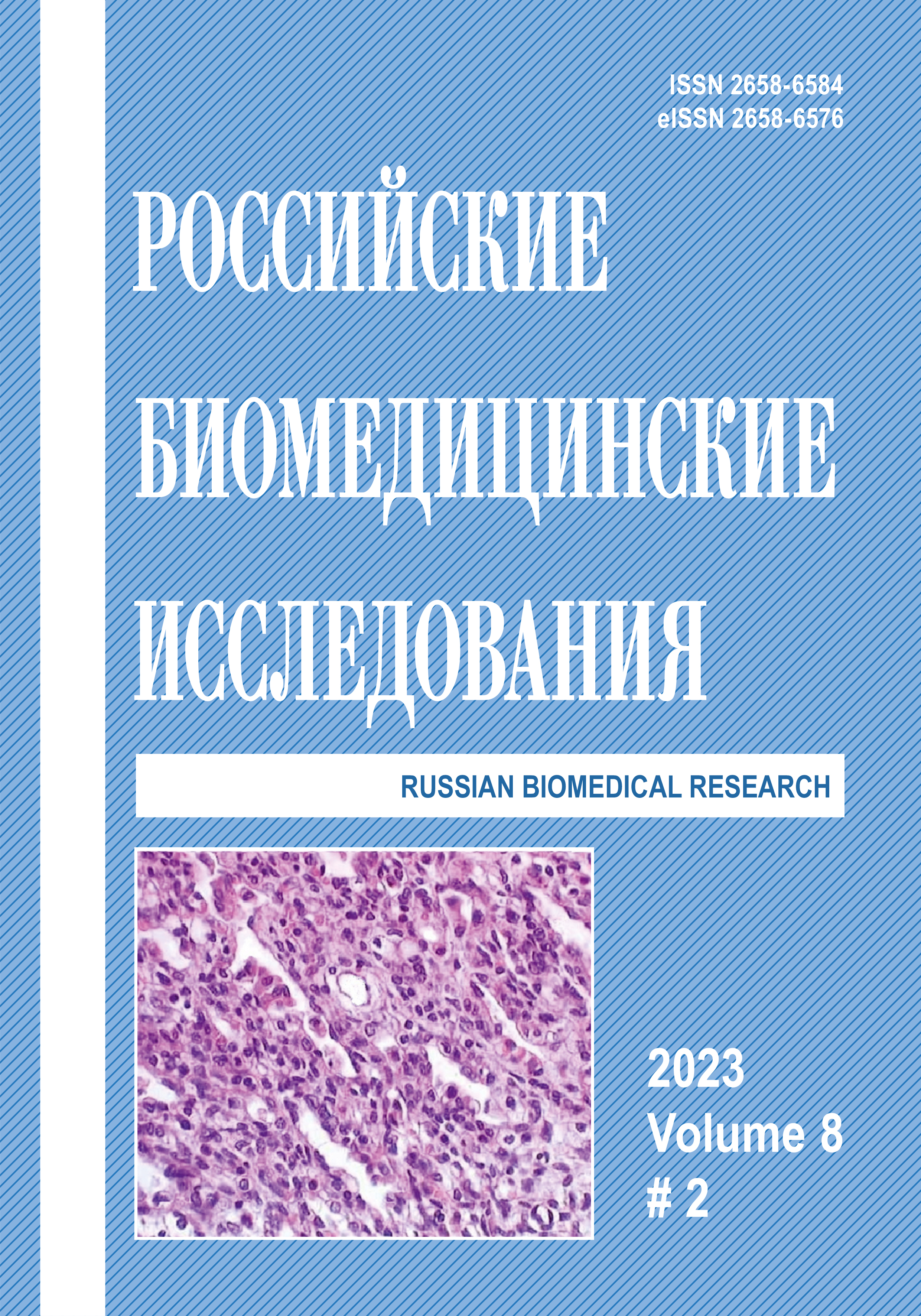METABOLIC EFFECTS OF LONG-TERM EXPOSURE TO WAVE-LIKE OXYGEN FASTING OF MODERATE SEVERITY
Abstract
Relevance. A variety of oxygen-dependent pathological conditions include intermittent, undulating episodes of hypoxia, alternating with a person’s stay in normoxia. An example of such conditions is sleep apnea. The features of metabolism in such conditions have not been practically studied, which determines the relevance of the study. Purpose of the study: to reveal the
features of metabolism in laboratory animals subjected to chronic undulating oxygen starvation in order to improve the diagnostic criteria for the consequences of intermittent hypoxia. Materials and methods. Long-term undulating normobaric hypoxia was created in a BIO-NOVA-2004 membrane hypoxicator (Moscow), adapted to work with rodents. The following operating mode of
the hypoxicator was used — an air gas mixture with an oxygen content of 14 %, the duration of a single hypoxic cycle is 60 minutes, the interval between cycles is 30 minutes, the number of cycles per day is 6 (the total period of moderate hypoxia is 6 hours per day), the duration of daily hypoxic exposure is 24 weeks. Laboratory animals (female mice of the C57BL/6J line) were obtained from the nursery of laboratory animals “Rappolovo” (Leningrad region). The animals were kept in a certified vivarium in accordance with the requirements of GOST 33044-2014 of August 1, 2015 “Principles of Good Laboratory Practice” and Order of the Ministry of Health of the Russian Federation of April 1, 2016 No. 267 “On Approval of the Rules of Good Laboratory Practice”. Biological material for research (blood, tissues) was taken from animals on the next day after the cessation of hypoxic exposure. In the blood serum, the activity of the liver enzymes AlAT, AST, GGTP, the levels of total cholesterol, low-density lipoproteins and triglycerides, and the concentration of glucose were determined. In addition, the content of neutral and basic carbonyl groups of proteins was determined in blood serum, and the activity of SOD and catalase (CAT) in erythrocytes was determined. In the liver tissue, the carbonyl groups of proteins, the content of total lipids and glycogen were determined; in skeletal muscles — glycogen. Statistical processing of the obtained data was carried out using the application package for data analysis (MS Windows 10) using the methods of correlation and dispersion analysis. Differences were considered significant at p < 0.05. Results. The most pronounced changes in biochemical parameters after prolonged exposure to wave-like moderate oxygen starvation are observed in cellular structures (liver, skeletal muscles, erythrocytes), while the parameters recorded in the blood plasma of animals were resistant to intermittent hypoxic exposure. Conclusion. The energy deficiency that occurs during chronic wave-like oxygen deficiency manifests itself in the mobilization of carbohydrate reserves of the body, which was accompanied by a 4–5-fold decrease in glycogen in the liver and skeletal muscles and the involvement of lipids as energy production substrates (a decrease in lipids in the liver by 27 %), switching the flow of amino acids to other types of exchange (decrease in GGTP activity by 14 %). The resulting oxygen deficiency was naturally accompanied by a decrease in the activity of SOD by almost 1000 times and catalase by 4 times, the accumulation of underoxidized products (an increase in the content of basic carbonyl groups in blood proteins by 41 %).
Copyright (c) 2023 Russian Biomedical Research

This work is licensed under a Creative Commons Attribution 4.0 International License.



